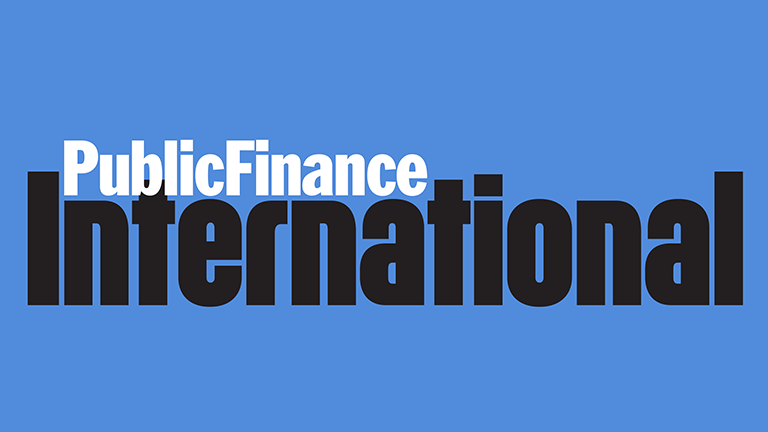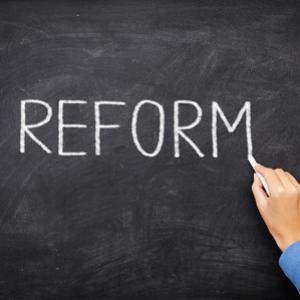13 May 2014
For anyone involved in education, digital is simply not optional any longer — it’s a given and it presents new challenges, says EY’s Uschi Schreiber
I grew up in Germany. My first school was in a small village in Northern Germany and I can still remember the name of my first teacher. Today, I’m based in New York but I have lived, worked and studied in Asia and Australia over the last 20 years, including a period working on education reforms in Australia.These international experiences, together with my global leadership role at EY, give me good insights into the role that higher education plays and the changing needs of students and employers in our interconnected world.
It’s a world underpinned by a digital ecosystem that already supports 10 billion connected devices and will be a primary driver of change and economic growth. But this digital revolution isn’t just about connecting devices to the internet, it’s about working differently. What we need now is so obvious that it almost goes without saying. In a digital world, we need digitally proficient people — people who are intuitive in their use of technologies, not just trained to use them.
Help wanted
In the 21st century, public and corporate sectors need people who can think, people who can take information from other parts of the world and apply it locally, people who can discover and locate knowledge and discern what’s useful in an ocean of availability, people who can contextualize knowledge to a range of industries and who can present knowledge and solutions with authority. Open education resources today focus primarily on technical knowledge — but we need to think more broadly — we need to produce people who are digital naturals, who have strong technical skills AND who can think critically and innovatively.
Would it not be desirable for the higher education sector to take advantage of digital technologies to increase these wider skills and fast-track the delivery of experience to make students more work ready? It’s happening in many parts of the world already. For example, a primary school in Singapore now applies game-based learning and provides an experiential platform for students to collaborate and engage with each other. Their 4 Dimensional Immersive program features projections of virtual worlds on 14 screens, creating a 360-degree, 42 square meter interactive touch screen. A secondary school features a state-of-theart two information and communications technology (ICT) experiential studios, an ICT-enabled library, a mathematical modeling studio, and two design and technology studios. Just imagine the approach of students who have grown up in these kinds of learning environments when they hit higher education: they will be discerning consumers and seek out the best and most digitized education resources in the world.
Another need in government and the corporate world is for information. We need access to existing and emergent knowledge and we need reputable sources. We must be able to easily discover the knowledge we need and contextualize it to industries and sectors, as well as being able to pose new questions and get them answered in cost-effective ways.
Higher education organizations are ideally placed to meet this wider need for information. They could add value to their knowledge creation activities, allowing external users to outsource some knowledge discovery functions and focus on activities of higher value to the market. A key question is whether universities’ knowledge management systems are currently geared to this end or whether their processes are just designed for internal purposes.
After all, the traditional channel for research output, and the method that features highly in university rankings, is publication — an intrinsically slow, lagged and highly structured model — that requires corporations and governments to do their own contextualization and evaluation, and to sift through huge quantities of documents in search of gems of insight. These same resources and delivery channels could be repackaged to meet additional market needs and to move the boundaries between higher education organizations and external users such as public and corporate sectors. Policy-makers also need to consider whether they are realizing the highest possible rates of return on public investment in knowledge creation in and through their higher education organizations.
People on the move
Global mobility is another priority. Despite the recession, companies are increasingly moving people around the world, and this trend is predicted to rise over the next 10 years. This means we need qualifications to be relevant to multiple destinations and to be accepted in those destinations. We also need people who can function in different cultures and value systems and move seamlessly between mature and fast-growth societies, as well as people who can recognize that there are things to be learned from emerging and fast-growth economies as well — not to think that all the answers come from Europe or the US.
Students recognize this — the number of students going abroad for education has grown by more than three times in the last three decades. In 2013, we saw huge increases in students going to world-renowned universities in the US (Open Door). At the same time traditional source countries such as China, Malaysia and South Korea are also becoming destination countries.
This means we need the offerings of the higher education sector to be both more globally and culturally aware. We need people who have experienced cultures fundamentally different to their own and who are adaptable because of that experience. The digital world is a fundamental enabler of this. Importantly, qualifications need to be easily portable, accredited from one country to another.
Finally, given labor market trends, we need people who are engaged in lifelong learning. Today, US workers stay at each job for an average of 4.4 years, but the expected tenure of the workforce’s youngest employees is about half that. According to Forbes research, 91% of millennials (those born between 1977 and 1997) expect to stay in a job for less than three years. This means they would have between 15 and 20 jobs over the course of their working lives. For them that means constant renewal and for employers it means we need to ensure our people are never disconnected from new learning.
Moving the dial
So, how do we use open education to change the paradigm, from a drop-in model of higher learning at discrete points when the cost-benefits to students tip in favor of study, to an “always on” model, discovering and adapting to these alumnis’ changing needs throughout a working life. How do we use digital learning to enroll for life?
I am constantly advising governments and university leaders that while to date the market has primarily employed digital adaptees, those days are over. We need digital naturals, and both the content of education and its means of delivery contribute to honing the skills and knowledge of digital natives. In every part of life, students are cloud and device connected. That’s part of who they are. They will not attend institutions nor work with employers who require them to suspend that part of themselves. Well-versed in navigating a global, virtual world, they will instead find alternatives elsewhere and outside of country boundaries.
We also need educators who can deliver both technical expertise — gleaned from wherever it resides in the world, not just from one place — and the complementary cultures, skills and experience that enable graduates to apply those skills in the workplace. Digital technologies have much to offer, both to the technical and non-technical, as well as helping facilitate lifelong learning. Higher education organizations need to connect to students for life — alumni are mobile in many different ways and open education is key to staying connected. Global accreditation is also not just an option but a necessity, given the globalization of the labor market.
In the final analysis, the impact of technology should be viewed not as a challenge but as an opportunity. Digital has the power to bring positive change to this and future generations — the task now for policy-makers is to make this vision a reality. In this and future editions of Citizen Today, we look forward to sharing examples of where such activity is already under way.
This feature was first published in the April edition of EY's Citizen Today












